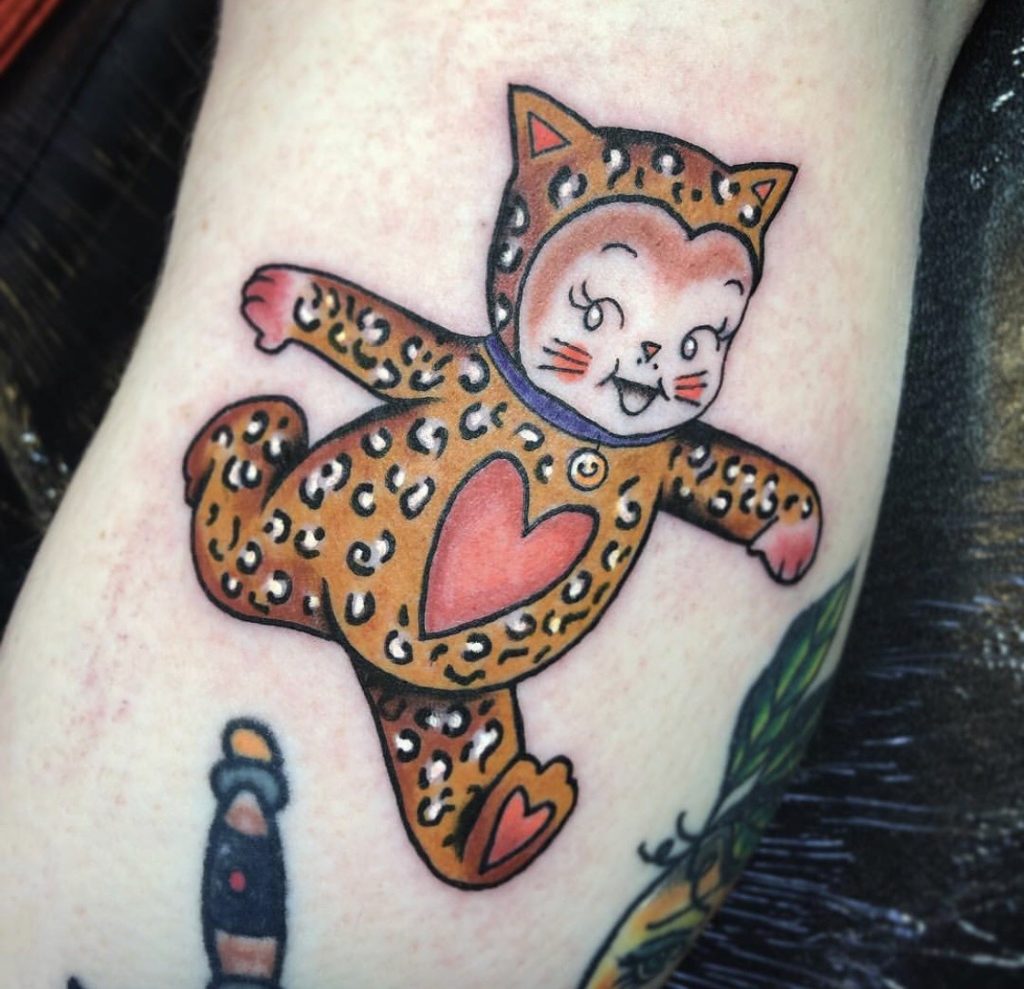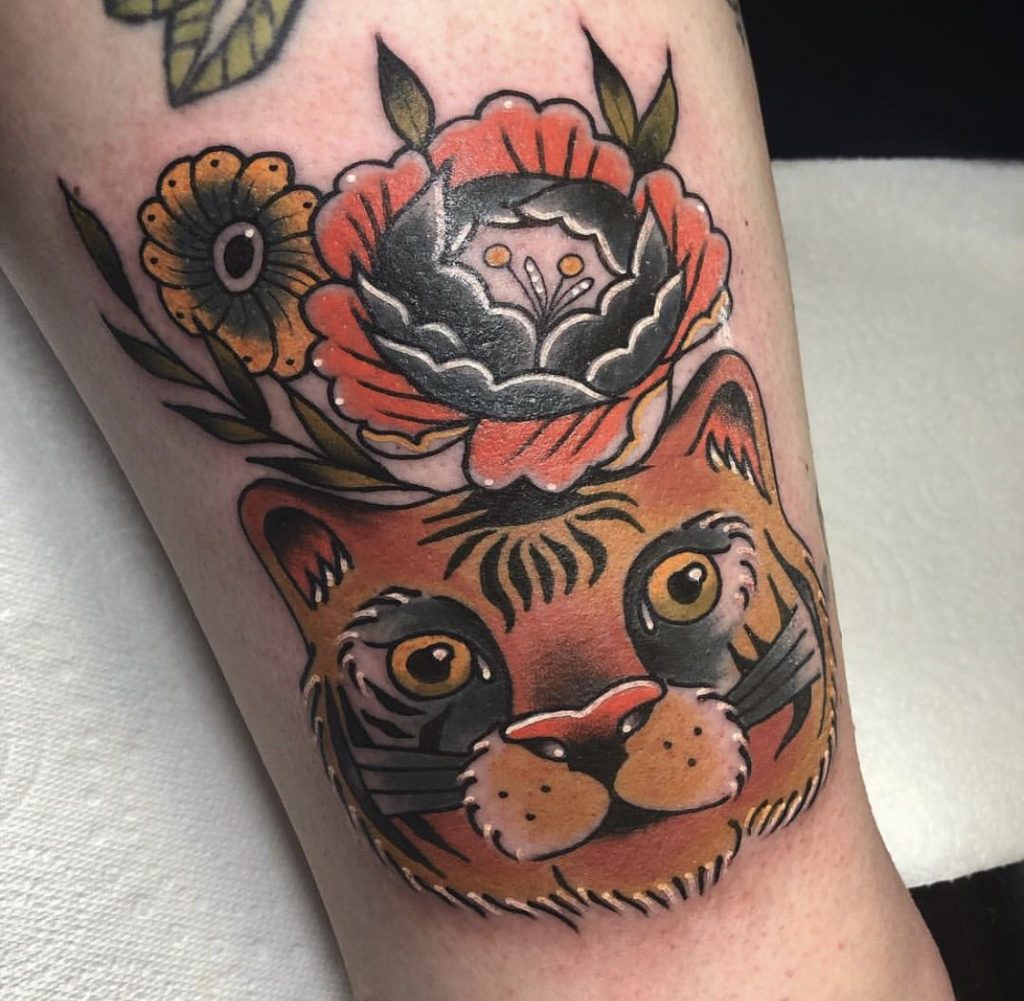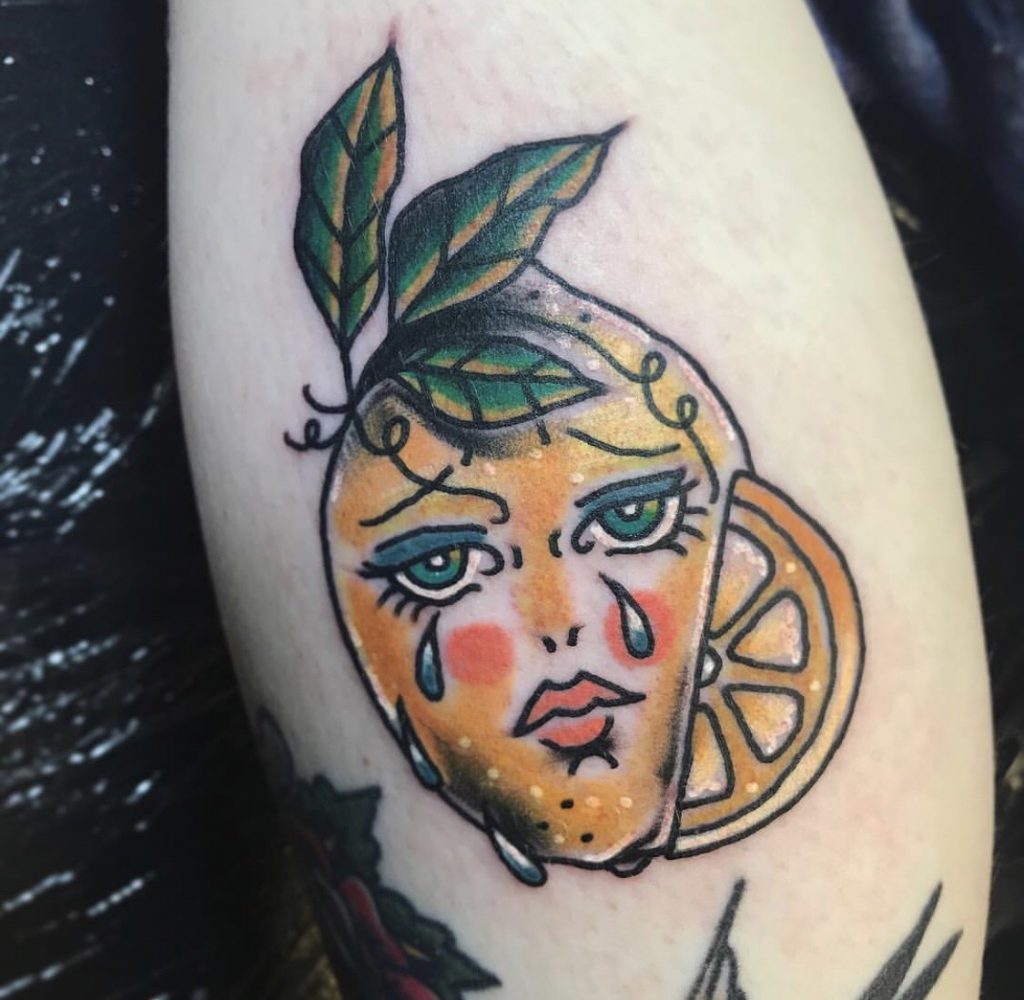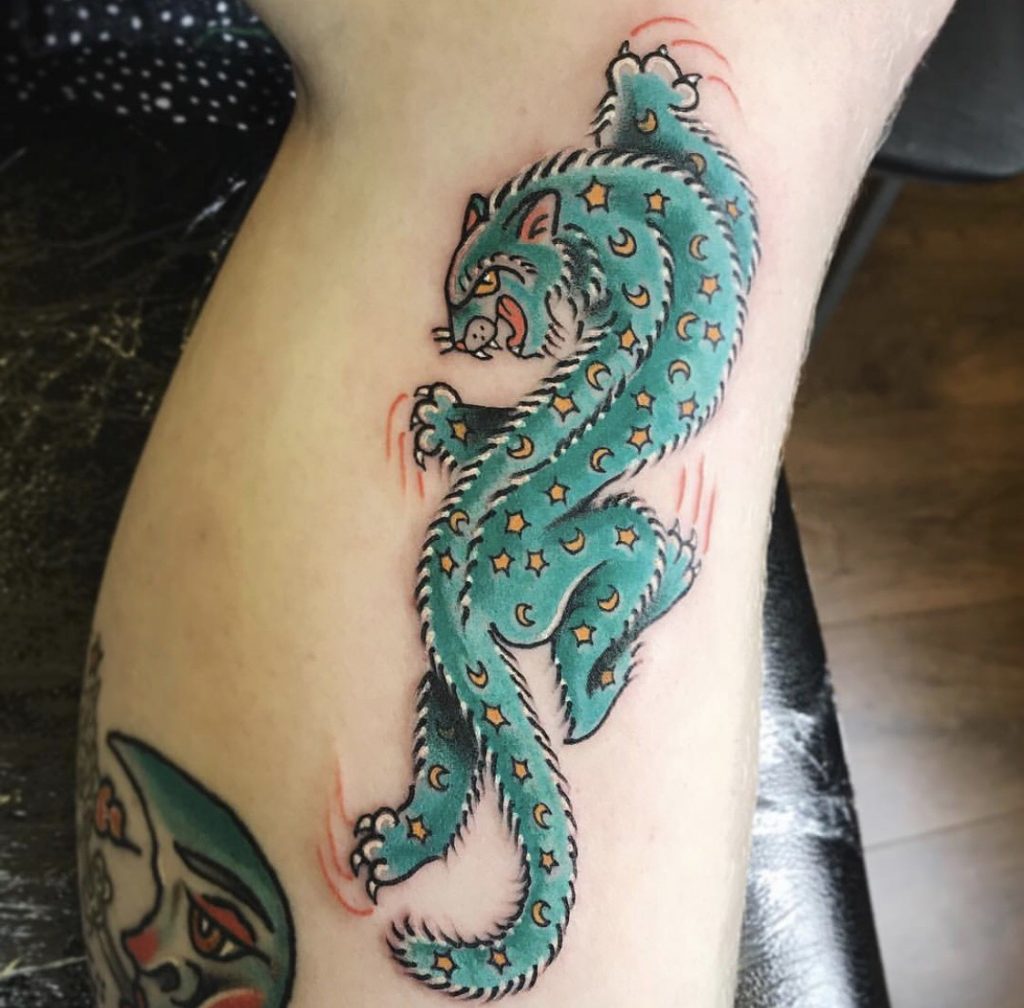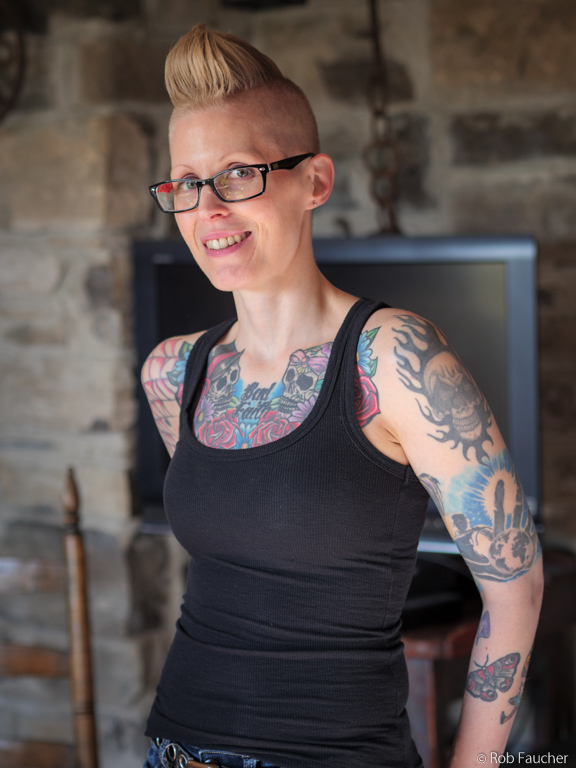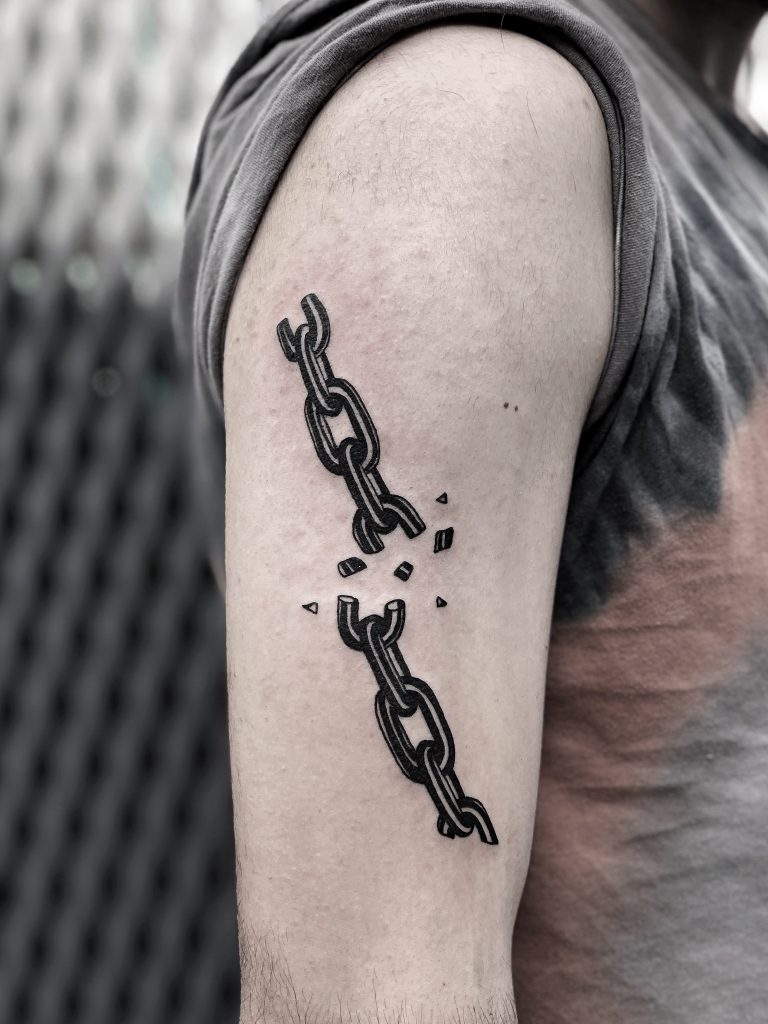Dr Kimberly Baltzer-Jaray, is Sessional Lecturer for Philosophy, Women’s Studies, and Social Justice & Peace Studies at King’s University College (Western), Advisory Board Member at the Centre for Tattoo History and Culture and Associate Editor for Journal of Camus Studies. Kimberly who was also a regular contributor to Things&Ink when the magazine was in print, recently talked to Paul Fairfield as part of the Philosophy Crush podcast, in which they discuss the connection between tattooing and philosophy. After listening to their conversation we were keen to find out more…

Photo taken by Rob Faucher
Can you elaborate further on women and tattooing. Drawing on your own experience what change in tattoo subjects have you seen between the sexes? Do you think these are influenced by more than just personal taste?
While it seems like there has always been a difference in the kinds of tattoos men and women get (e.g., the Maori facial Moko, the Taiwanese Atayal facial tattoos, Sailer Jerry Femini-graphics, etc.) or in some cases certain tattoos only to be applied to women (e.g., Ancient Ainu facial tattoos, inner thigh tattoos in ancient Egypt, facial tattoo patterns of the Berber women), today what I find stands out as a gender difference are the reasons many women get tattoos. I feel like, at least in the Western world, the tattoo subject matter women get is so vast and diverse, things once viewed as only for men or as masculine tattoos are now on women’s bodies.
I’ve seen very heavy black lined or filled tattoos on women, and I’ve seen pin-up girls, cars and trucks, and horror movie icons on women too. But the one thing I have heard many times from women, is the idea of reclaiming their beauty and their body from patriarchy and male-dominated perceptions of beauty. Some of these women have recovered from eating disorders, or have combated mental illness and suicide, or have survived breast cancer where a double mastectomy was performed.
They are reclaiming their bodies and defining their own sense of beauty by new standards and ideas – emphasis on their own. They are using tattoos to heal and like a butterfly emerge from a dark shell.
I have heard these kinds of comments from both cis and trans women, and it’s always point at beauty and reconnection with the self. In other words, fuck patriarchy! It’s reminiscent of the works of modern feminist writers like Naomi Wolf, Sandra Bartky, and Susan Bordo and their calling attention to how patriarchy uses beauty to oppress women and it does so by restricting the body and controlling behaviour. Tattooing becomes an act of defiance and reclamation, and it’s extremely powerful. I can’t say I’ve heard men do this. I wouldn’t say no man has ever done this, I’m sure there are examples, but it’s not a common male experience to reclaim beauty from patriarchy from what I can tell.
In this way I think the difference in what men and women tattoo on their bodies can and does boil down to more than just personal taste much of the time. It’s really based in the journey you find yourself on. Personal taste is bound up in here, of course, but I think just saying it’s all personal taste really underestimates and fails to represent the truth of the differences at play.
You argue that tattooing has been seen as uncivilised and savage, do you think these thoughts inflect how women with tattoos are seen and treated?
I should start by saying that I’m not the only one to present this point, there are several other tattoo scholars who talk about the colonial, racist and Eurocentric attitudes that prevailed and to a degree still remain today in some circles and places. In my opinion and based on my own experiences, the ways that these attitudes have come to affect tattooed women is that they are often become regarded as highly erotic sexual objects and/or they are underestimated in intelligence and ability (I say ‘and/or’ because these attitudes can happen separately or together).
To restate this bluntly, tattooed women come to viewed as sexually adventurous, easy to fuck, immature, dim, and incapable serious or executive work.
You don’t see this same attitude voiced when we see Aquaman Jason Mamoa or David Beckham all covered in tattoos: they may be viewed as sexually attractive but no one thinks they are incapable of authority, intelligence, or exercising prudence with sex. When I think of how tattooed women are viewed, I see it as encapsulated succinctly in the name given to and perceptions about the lower back tattoo known as the ‘tramp stamp’. A guy with a lower back tattoo is not labelled as such. These attitudes and preconceived notions can make it difficult for tattooed women to get certain jobs, or a promotions, or in my case seen as equal with my academic or professional peers. There’s an awful irony in listening to people who will quote something MLK-esque saying that you can only judge someone by the content of their character and not other arbitrary features like skin colour, faith, or ethnicity and yet that same person will regard a tattooed women as somehow less worthy of respect or dignity. It is getting better, which is nice to see, but when it comes to upper level management, executive level positions, or academic jobs the same shit still exists and isn’t getting better. It hurts tattooed women – period.
It also divides us sometimes too, because non-tattooed women who hold these patriarchal colonial attitudes won’t stand with tattooed women against these systems of oppression. In my Women’s Studies classes, when we have talked about intersectionality, I have often brought up tattooing as a layer of identity that can work as an oppressive force because we still live in a society where these old colonial attitudes prevail and create structures of injustice against women. I’ve had my PhD for over a decade now and I can’t count the number of times I have gotten a surprised and suspicious look when I say I have one and that I lecture at a university. I have attended academic conferences where I have been made to feel my difference in ways that was unsettling and debasing. I see it as, for the most part, my tattoos added a fresh layer of hell to sexism. To add to this point, complete strangers think it is acceptable to touch my tattooed skin – my arms usually – or comment on them loudly in public places, and it’s mainly men who do this. I’m not alone in this complaint, it’s one I have heard many times from other tattooed women.
It’s as if the combination of being woman and being tattooed gives them some kind of added permission to assert power and patriarchy over me.
Does this make me regret my tattoos? Never. They are worth the struggle and if anything make me stronger and more resilient. I also can’t say every experience has been negative. As I said, it is getting better. The Philosophy Crush podcast interview I was invited to participate in, is one very happy moment for me. To be recognised for the work I do in this area and by someone in the philosophy community is wonderful. Also, my work with Things & Ink has had a positive effect I cannot underestimate: I have formed many profound friendships and alliances as a result, and I’ve helped change some minds and perceptions in pieces I’ve written about tattooing and tattooed women (the magazine as a whole made great strides here). My university program director sees my tattoos as a positive feature that are accentuated by my academic abilities: my appearance gets students attention by disrupting the perception of profs being all old guys in tweed coats and those who are tattooed women (or just those different from the ‘ norm’ – I fondly call the oddities, which I’ve always been one) find representation in me, and my presence makes the department’s inclusivity and diversity crystal clear for all to see.
In this way and with this kind of support, I wear my tattoos and gender proudly, and I use my voice to draw attention to the issues tattooed women and others face.
You talk about tattoos being a way to take art onto the street, do you also see yourself as a mobile art gallery? Does this notion affect how you see your own tattoos and those of others?
I do yes, but the art I am showing only I really care about or truly understand. It’s like having a mobile art gallery and journal all in one. Other people are welcome to have an aesthetic experience when seeing my arms, legs or back, but in the end it’s art for me, about me, and it’s my journey. Tattooing as art is an experience of the beautiful in some way, whether that is beauty in your own eyes or someone else’s. Tattooing is an art that really is ‘to be shown’ whether you actually show it or not because most artists will place pieces in a position that goes with the body shape rather than against it, the direction of them are to be seen by others eyes and not your own, and the size of the piece must be proportional to the body it is going on. When you get the backside of your body done, you can only see it via a mirror and that angle – that perspective – is through the eyes of another outside your body. Now, the choice you have with your mobile art gallery is whether you keep it as a private collection or put it all on display, and where the red ropes line the way for special others to come in or keep some from getting close your valuable pieces.
It does affect both how I see my own tattoos and how I see others as well. As I fill in my body I am ever aware of how it looks, to me from my own eyes and that it will be viewed by others. While I can talk about how adults look at me, the best encounter are children. My niece, Violet, is a great example. When she was a baby, she used to get this look of awe on her face when she looked at and touched my skin. Now she’s three, I love when she calls me a colouring book and she’s always impressed that I’ve coloured in the lines. When she gets paint on herself she often remarks that she’s like me. That for me is the sweetest way to be a mobile art gallery, and in many ways it is opening her eyes to how other people can be different in their expression of subjectivity. I think if we view other’s tattoo bodies as mobile art galleries it conveys both the individuality and the significance of the act of tattooing.
Whether you like the tattoos on their body or not, or whether they are bad or good quality, they are theirs and not yours – it’s their beauty, not yours. To each her or his own.
It’s a way to create a distance and a kind of respect for someone else’s choices and style. In the age of tattoo TV contest shows and conventions with trophies where there are judges and competitions for artists to enter, it’s important to not take that kind of mentality onto the street with regular tattooed people. Their body and their choices are not there to be judged or commented on by everyone, there’s no award to given or constructive criticism to be dealt out. License yourself to be silent and just have the experience. Their body, their choice, their mobile gallery – end of story.
Intrigued? You can listen to Kimberley’s podcast here.

